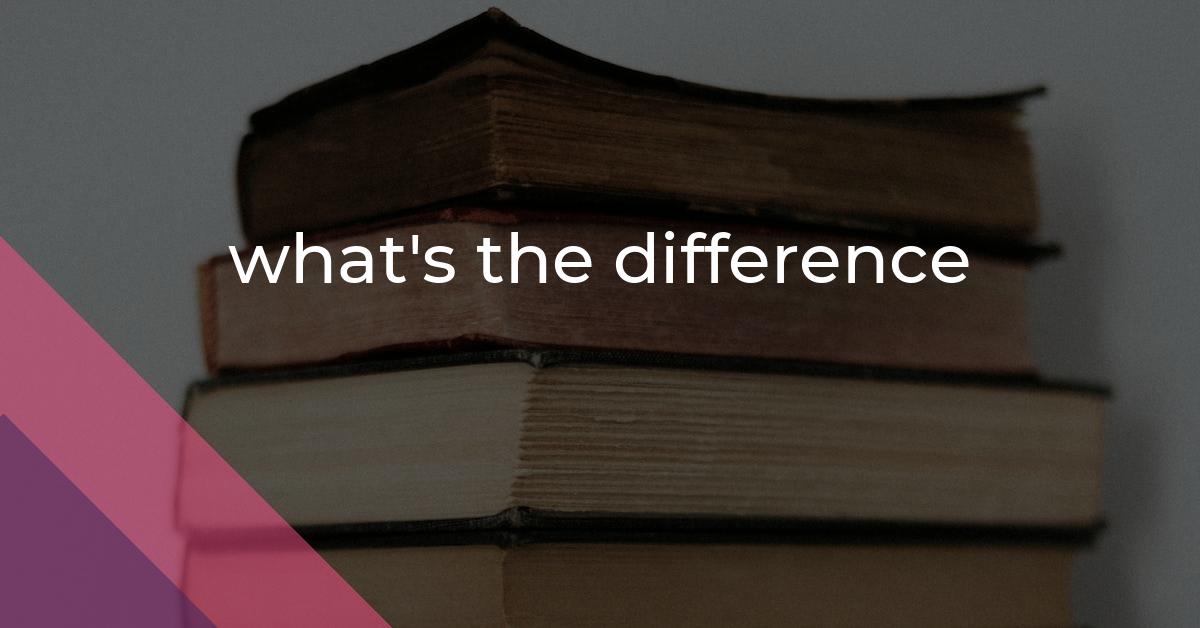what’s the difference: Idiom Meaning and Origin
What does ‘what's the difference’ mean?
The idiom "what's the difference" is used to express indifference or to question the importance or significance between two choices or options.

Idiom Explorer
The idiom "you know what" is used as a phrase that often indicates that the speaker is trying to avoid saying something explicitly, assuming the listener already knows or will understand the unspoken message.
The idiom "what's what" means to understand or know the important or essential information about a subject or situation.
The idiom "what's the matter" is used to ask someone what is wrong or bothering them.
The idiom "what's the good of" is used to question the practical value or usefulness of something. It expresses a doubt or skepticism about the benefits or advantages of a particular action or situation.
The idiom "what's going on" is used to inquire about the current situation or events, seeking information or understanding. It's a casual expression commonly used in conversations to ask about what is happening or to express confusion.
"What of it" is an idiomatic phrase that is used to express a lack of concern or indifference towards a situation. It suggests that the speaker does not consider the matter to be significant or important in any way.
The idiom "what is more" is used to introduce an additional and often more important point or piece of information in a conversation or argument.
The idiom "what do you say" is a rhetorical question used to ask for someone's opinion or approval on a matter. It is a way of inviting the listener to express their agreement, disagreement, or suggestion.
The idiom "what's it to you" is a rhetorical question used to express irritation or defensiveness towards someone who is prying or meddling into one's business. It implies that the person has no right to be concerned or involved in the matter.
The idiom "tell apart" means to distinguish or recognize the difference between two or more similar things or people.
Unraveling Subtle Distinctions
The idiom "what's the difference" is a commonly used phrase in the English language. It asks about the distinctions between two or more things. The question prompts further analysis and discussion to explore the dissimilarities or divergences between the elements at hand.
One important characteristic of this idiom is its interrogative nature. When someone uses the phrase "what's the difference," they are asking about the differences between things. It encourages individuals to delve deeper into the subject being discussed.
This idiom can be used in a variety of situations, such as discussions, debates, or casual conversations. It allows people to compare and contrast physical objects, abstract concepts, characteristics, or qualities. By asking "what's the difference," individuals can initiate a dialogue that aims to delineate these distinctions.
An important aspect of this idiom is its versatility. It can be used in various contexts, making it a flexible tool for communication. It can be used to compare differences in opinions, beliefs, preferences, or even in the assessment of situational outcomes.
The flexibility of this idiom also allows it to serve as a rhetorical device. It can challenge assumptions, provoke critical thinking, or stimulate intellectual discourse. By raising the question "what's the difference," individuals can encourage others to reconsider their perspectives, analyze various aspects more closely, and arrive at more nuanced understandings.
The idiom "what's the difference" can also be used in a sarcastic or dismissive manner. In such cases, it conveys a sense of indifference towards trivial distinctions or an assertion that the differences being discussed are inconsequential.
This idiom is an indispensable part of the English language. It prompts individuals to explore and articulate the dissimilarities between elements. It finds its place in a wide array of situations, serving as a catalyst for conversations, debates, and critical thinking. While its literal meaning may seem straightforward, the idiom encompasses a broader significance that invites deeper analysis and exploration.
The related idiom "same difference" is often used to express the idea that two things are essentially the same despite minor variations or distinctions. It can be used to highlight the insignificance of the differences between two things. For example, if someone says "I like chocolate ice cream, and you like vanilla ice cream," another person might respond with "same difference, they're both delicious."
Another related idiom is "if it's all the same," which is used to express indifference or lack of preference between alternatives. It implies that the outcome or choice doesn't matter. For example, if someone asks "Do you want to go to the movies or stay home?" and the response is "if it's all the same, I don't mind either way."
The idiom "what is more" is used to introduce an additional point that strengthens or supports a previous statement. It is often used to present a contrasting idea or to provide further evidence to support an argument. For example, "The restaurant has great food, and what is more, it offers excellent customer service."
Lastly, the idiom "what's what" is used to inquire about the true or essential nature of something. It asks for an explanation or clarification to understand the facts or reality of a situation. For example, if someone is unsure about the details of a new project, they might ask their colleague "Can you explain what's what with this new project?"
Example usage
Examples of how the idiom "what's the difference" can be used in a sentence:
- "I don't understand, they both look the same to me. What's the difference?"
- "He claims to have a higher salary, but what's the difference if he still struggles financially?"
- "You can choose either option, they are essentially the same. What's the difference?"
Analysis:
The idiom "what's the difference" is used when someone wants to emphasize that two things or options are so similar that their distinctions are negligible or insignificant. It is often used to express confusion, indifference, or to suggest that choosing between the options doesn't really matter in the greater context. In the examples provided, the idiom is used to question the significance, importance, or distinction between different things or options.
More "Comparison" idioms



